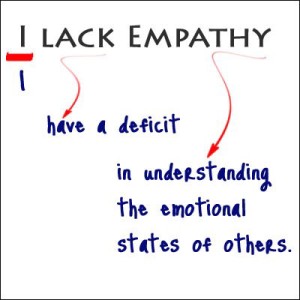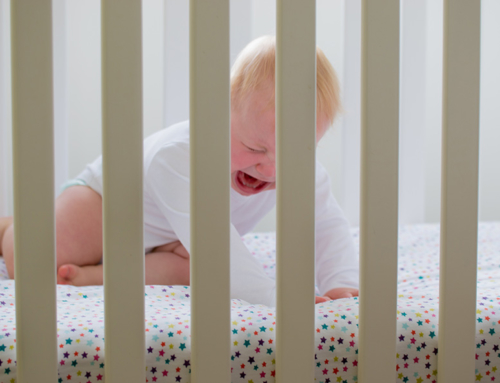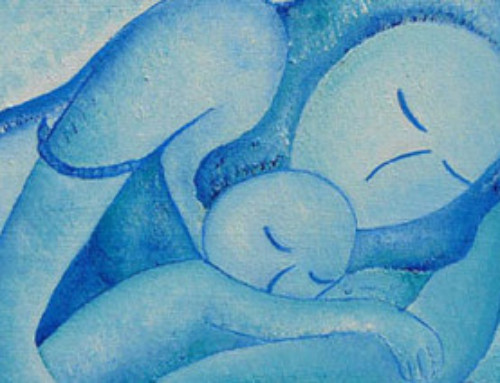This first appeared in Nurture Magazine in Australia. To subscribe to Nurture, either online or a physical copy, click here.
 If you speak to parents about what they hope they are teaching their children to prepare them for the future, you’ll often hear what we would consider positive emotional and social attributes, such as kindness and empathy. We want these for our children because we know that these traits are associated with better outcomes not only for society but for the individuals who possess them. Children with deficits in understanding other people’s emotional states and responding to these states in an appropriate manner also tend to present with lower social adjustment, deficits in moral development, and even problems academically
If you speak to parents about what they hope they are teaching their children to prepare them for the future, you’ll often hear what we would consider positive emotional and social attributes, such as kindness and empathy. We want these for our children because we know that these traits are associated with better outcomes not only for society but for the individuals who possess them. Children with deficits in understanding other people’s emotional states and responding to these states in an appropriate manner also tend to present with lower social adjustment, deficits in moral development, and even problems academically
That’s right, as parents we may actually be setting up our children to suffer socially and emotionally because of some of the culturally-endorsed behaviours that have become common in our society. In this commonness, we are seeing the detriments: Empathy in kids and young adults is declining[5], approximately 25% of children will develop a mental disorder and the median age of onset for anxiety disorders is now six years of age[6], and in some countries, fewer people are donating to charities than before[7] (although Australia has managed to buck that trend with ever increasing charitable donations, putting them atop the world in that regard[8]).
What are these behaviours to avoid?
We tell our kids that others are “fine” when they aren’t. A child falls at the park and starts to cry, and many of the other children will suddenly look anxious and turn to their caregiver to find out what is going on. They do this because they have the capacity to empathize, even if just at a very basic, physiological level[9]. As parents, we see the pain rising in our own kids and too many of us will tell our child, “He’s fine. Don’t worry.” These few words have the intended effect of calming our children and allowing them to continue playing without their own tears falling, but they also have some unintended effects.
The child who is repeatedly told that others are “fine” when they are not is at risk of growing up without a clear understanding of other’s emotions. Sadness is not always sadness for them because they have been told it’s not. This matters because the inability to identify emotions in others – or to accurately identify them – is linked with many social and emotional problems[10]. The child runs the risk of not only being unaware of when someone is sad and when they are “fine”, but she or he may even lose some of the ability to empathize with others.
What Can You Do Instead? The moments where are children enquire about other people’s negative emotions are moments we should cherish and take advantage of. Instead of calming our children by telling them a lie (because really the other person isn’t fine), we can use the moment to explain what happened (“Well, that little boy was playing on the swing and fell off and he seems to be hurt”), hopefully be able to tell about how the person is being cared for thus providing concrete examples of how one can comfort and care for someone in distress (“He’s gone to his mommy/daddy/friend/sibling who’s going to give him hugs and help him feel better”), and then point out that the other person will be fine even (“And he’s going to be okay”). The latter part is key to keeping our own child’s sense of distress down, but the more this is repeated, the more the child is given concrete examples of care and can keep these handy for future reference. In this way you are alleviating your child’s own anxiety (which is an incredibly normal reaction to seeing someone in distress[11]) and helping them develop their empathic toolbox.
We ignore the needs of younger ones, modeling non-responsive behaviours. Many of the people reading this are probably not of the sleep training variety given the audience, but it is a common approach in today’s society and one we must think long and hard about. Many people have spoken about the possible consequences of things like cry-it-out on the child who is doing the crying[12] and there’s research showing the ineffectiveness and possible downfalls of early sleep training[13], but I want to focus here on the possible effects on other kids in the household.
Imagine, if you will, that you are a young child. Your parents talk to you all the time about being kind and considerate to others. You have a younger sibling and most of the time your parents talk to you about being gentle and careful with your sibling because she is just a baby. A few months into this, you’re getting good at this whole gentle thing and you know making the baby cry is not a good thing. And if the baby is crying? You get mom or dad to make it stop. Then one day you’re getting ready for bed and you hear your sibling crying – screaming – from her cot. You wait for your parents to go get your sibling and offer comfort. But they don’t. You want to go in and make it stop because the crying makes you feel bad too. You feel shaky and scared. They don’t come, but finally after a while, it stops. This happens again the next day and the next. You may even ask your parents and they tell you this is something they have to do to help your sibling sleep.
What has happened here? For the child who has to witness sleep training, there is first the activation of his or her own distress which is pretty much automatic when younger children hear or see someone crying (again, see [11]). In addition to this, the child is being taught that someone they know is vulnerable is not always worthy of our care. Once again, we are telling our children to ignore the very real signs of distress in another, overriding biological and evolutionary automatic responses: We are telling them to ignore their instinct to care.
What Can You Do Instead? Well, the simple answer is to avoid any type of sleep training or parenting behaviour that is non-responsive. This does not mean your child shouldn’t cry or that you give in to everything when they are older, but that tears are met with appropriate comfort and boundaries are needed and should be enforced respectfully. If sleep is an issue in your house and you have ruled out possible feeding or health problems (see [14]), there are many gentle methods you can use that will help increase the amount of sleep family members get (see [15]) while continuing to be responsive to your baby. This responsiveness will in turn help your other children understand the importance of empathy, care, and compassion.
We tell our kids they have to share. How common is it to go out somewhere where there are multiple children and suddenly the kids seem to be having a fuss over who gets to use what toy? Or when young children have friends over and then don’t want to share some of their favourite toys? When this happens, it’s almost automatic for many parents to jump in and tell the child with the toy that they have to share. Sharing is nice. Parents seem to believe that if they don’t force sharing early on, their child will be the mean, selfish brat who does not share with others and then never has friends. It’s a dark and lonely road for the non-sharer now isn’t it?
Indeed there may be some truth to the fear; after all, as adults we don’t like to remain close to people who only take and never give. Are children any different? Not really. The issue becomes whether forcing our children to share will actually help them in the long run. As the push against forced sharing starts to occur, people have mentioned concerns about the entitlement that forced sharing produces[16]: A child who learns he just has to ask to get what he wants will most definitely be entitled later in life too, right? Not to mention that forced sharing may inhibit the development of delay of gratification which has been linked to greater academic competence in adolescence[17], greater ability to cope with frustrations and stress in adolescence[17], resistance to temptations in midlife[18], and even a healthier body mass in their 30s[19]. Perhaps most importantly though, forcing sharing removes the chances for kids to problem solve together. The child with the toy no longer needs to consider the needs or feelings of the other child because having been forced to share, he is only concerned with his own. Contrary to what we have been told in our society, children can and do problem solve quite well when left to their own devices, why other cultures often allow the types of behaviours that seem to drive us nuts (for a discussion on that, see [20])
What Can You Do Instead? First we must remember as parents that equitable sharing develops with time. Although children as young as three will often endorse sharing as what should happen for both themselves and others, it is not until seven or eight that they actually start behaving in conjunction with this belief[21]. Being aware of this development, we can take the time in between to model sharing and discuss the merits of it without forcing it. We can teach our children to tell others, “You can have X when I’m done with it.” This acknowledges that whatever it is was theirs to play with and that it will be given up at some point, just not on the other person’s schedule. Many parents also find it helpful in their own home to allow their children to earmark toys that they are not comfortable sharing and putting them away when others come over. These practices give your children a sense of control over what they share, when they share, and with whom, and isn’t that what we are all asking for really?
We tell our children that they don’t mean it when they have angry or violent thoughts. I don’t know of a single child who has ever failed to utter an angry or violent thought. How many parents can’t say their child has said – in a bout of anger or frustration – something along the lines of, “I hate you!” My daughter’s personal one is, “You’re a bad guy now!” With others it may be comments along the same lines, but sometimes children will go a little darker and voice violent thoughts. “I want to hit her/him!” has been known to come out of my daughter’s mouth on more than one occasion towards someone she is angry with. I have also heard other children voice similar thoughts at parks, dance classes, play gym, etc.
The problem is that many parents decide to tackle these thoughts with, “You don’t mean that.” Have you ever been told you don’t mean something you do? It’s infuriating. In fact, it’s probably the surefire way – when worked up – to make someone get even angrier. It may be true, but it also may not be. One thing we have to remember is that for children, they are expressing what they feel in that moment. They are not making broad generalizations the way adults tend to. Unlike us, who forever worry about the past and the future, often ignoring the now, they are creatures of the moment. Just because they “hate” you or want to hurt you at one moment doesn’t mean they won’t love you and hug you the next. The problem, therefore, in telling them they don’t mean it is to negate their experience and their understanding of their own emotions. One of the things we must remember is that the development of language and the development of emotion regulation is actually a bidirectional relationship[22]. This means that children are using these moments to help them learn how to regulate their own emotions. Indeed, these are most likely the first steps away from lashing out physically, something we are forever encouraging.
What Can You Do Instead? Although it can be difficult when you are at the receiving end of an angry comment and perhaps even more difficult when there’s another parent standing nearby and it’s directed at their child, you really ought to allow your child to express themselves. Answering with a very simple, “I hear you” or “I hear that you’re very angry/frustrated/upset right now” may be all your child needs to calm down. Once calmed down, it’s entirely appropriate to open up the discussion about how words can hurt people too and then provide your child with alternatives like, “I’m really angry with you right now.” Of course, you must be careful not to put words into their mouths and thus I would caution against doing this until they are older to truly understand what it means to say something like “I hate you”. Once they understand it, asking them if they really “hate” you versus feel anger towards you can help them clarify their language in the future.
If they voice violent thoughts, it can be helpful to them to say (in a way your individual child will understand), “It’s okay to feel that way – we all do sometimes. Just remember we don’t act on it.” I admit I have taken it one step further and after the moment has passed, I’ve told my 3-year-old daughter that I thought it was great she was able to express herself and not hurt anyone. Remember that these violent thoughts are not “mean”, but simply are. Again, parents can focus on different language after your child has calmed down (it’s fruitless in the moment as is any logical discussion). Just remember that even us adults often have these violent thoughts and voice them, so we should not be holding our children up to a standard that may be incredibly difficult for them.
***
Children have a predisposition towards developing socially. After all, we have been social animals for hundreds of thousands of years. The assertion that empathy and kindness are innate (in various degrees) in all humans seems to be true based on what we know of child development[23], it’s the cultural contribution that may be limiting their full expression. As parents, we need to be aware when cultural norms cease to help our children develop positively and start to hinder them. In the case of empathy and emotional awareness, our current culture is lost and it is up to us as parents to regain our footing to help our kids be the most empathic, aware, and kind they can be.
[20] Gross-Loh C. Parenting Without Borders: Surprising Lessons Parents Around the World Can Teach Us. New York, NY: Penguin Books, 2013.
[21] Smith CE, Blake PR, Harris PL. I should but I won’t: why young children endorse norms of fair sharing but don’t follow them. PLoS ONE 2013; 8: e59510.
[22] Cole PM, Armstrong LM, Pemberton CK. The role of language in the development of emotion regulation. In SD Calkins & MA Bell (Eds.) Child Development at the Intersection of Emotion and Cognition. Human Brain Development. (pp. 59-77). Washington, DC: American Psychological Association, 2010.
[23] Bloom P. Just Babies: The Origin of Good and Evil. New York, NY: Crown Publishers, 2013.






That is such great insight on the siblings and sleep training!
That those parents who choose to sleep train their youngest while at the same time they are telling older brothers or sisters to treat people nicely is so contradictory and confusing and your so right it is teaching how not to have empathy.
How about breastfeeding and empathy? http://www.bestforbabes.org/science-you-can-use-does-breastfeeding-influence-your-kids-moral-development/